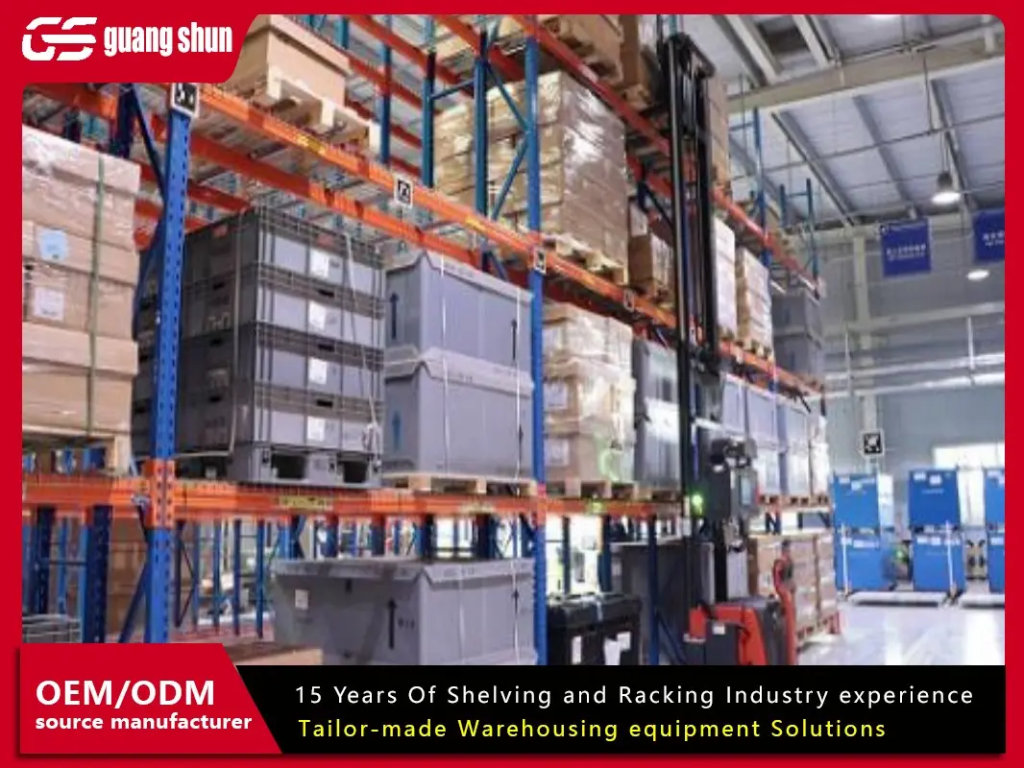A well-designed Logistics racking system forms the backbone of efficient supply chain and warehouse management. It is the key to maximizing storage capacity, improving workflow, and maintaining a structured organization of goods. In today’s fast-paced logistics environment, businesses rely heavily on racking systems that can handle large inventories, support heavy loads, and ensure quick accessibility. Whether managing a large distribution center or a compact warehouse, the right logistics racking system enables seamless storage, retrieval, and movement of goods while ensuring safety and efficiency.
As global logistics and e-commerce continue to expand, warehouse operations face increasing demands for speed, accuracy, and scalability. Modern Logistics racking systems are engineered to meet these challenges through innovative designs that maximize space utilization and streamline inventory flow. These systems play a vital role in reducing manual handling, minimizing operational costs, and improving the overall productivity of logistics operations.
The Importance of Logistics Racking in Supply Chain Management
Efficient logistics racking is not just about storing products—it’s about creating an organized structure that enhances workflow across the supply chain. A well-planned racking system allows warehouses to manage thousands of SKUs efficiently, ensuring faster order fulfillment and reducing errors. By utilizing vertical space and keeping items systematically arranged, racking helps businesses make the most of their available area without needing to expand physical infrastructure.
Moreover, logistics racking ensures better inventory control and improved safety. Properly designed racks prevent product damage, reduce clutter, and minimize risks of workplace accidents. They also support automation systems, such as conveyors, robotic picking arms, and warehouse management software (WMS), enabling smart, data-driven operations.
Common Types of Logistics Racking Systems
Different types of Logistics racking systems are designed to meet specific warehouse needs, depending on product size, weight, and turnover rate. Some of the most commonly used systems include:
- Selective Pallet Racking: Provides direct access to each pallet, ideal for warehouses with a large variety of products.
- Drive-In and Drive-Through Racking: High-density systems that allow forklifts to enter racks for deep storage of similar goods.
- Push Back Racking: Works on the “Last In, First Out” (LIFO) principle, allowing multiple pallets to be stored in a single lane.
- Pallet Flow Racking: Uses gravity rollers for automatic pallet movement, suitable for high-turnover products and FIFO inventory.
- Cantilever Racking: Designed for long or irregularly shaped items like pipes, lumber, and metal bars.
- Mezzanine Racking: Adds additional storage levels within the same space, effectively doubling or tripling capacity.
Each system can be customized to align with warehouse operations, load requirements, and safety regulations.
Benefits of a High-Quality Logistics Racking System
Investing in a professional Logistics racking system offers several operational and financial advantages:
- Maximum Space Utilization: Efficiently uses vertical and horizontal space to store more goods in the same footprint.
- Improved Productivity: Organized storage layout reduces retrieval time and enhances workflow efficiency.
- Enhanced Safety: Strong, stable racks minimize the risk of accidents and ensure secure handling of heavy loads.
- Scalability: Modular systems can be expanded or reconfigured to accommodate changing business needs.
- Reduced Operational Costs: Optimized space and improved handling efficiency result in lower overall logistics expenses.
- Better Inventory Accuracy: Clearly organized shelves and labeling systems improve visibility and control over stock.
These benefits make logistics racking an essential investment for any business focused on operational excellence and long-term growth.
How to Choose the Right Logistics Racking System
Selecting the ideal racking system requires careful consideration of several factors:
- Product Characteristics: Size, weight, and packaging type determine rack design and capacity.
- Storage Density: Decide between selective or high-density racking based on inventory turnover.
- Warehouse Layout: Plan rack configuration to ensure optimal flow and forklift accessibility.
- Safety Compliance: Ensure the system meets relevant safety and load-bearing standards.
- Future Expansion: Choose a modular racking design that allows flexibility as storage needs evolve.
Consulting with experienced racking professionals ensures that your system is optimized for efficiency, safety, and sustainability.
The Future of Logistics Racking
The future of logistics racking is being shaped by technology and automation. Smart racking systems are being integrated with sensors and Internet of Things (IoT) devices to monitor stock levels, track pallet movements, and predict maintenance needs. Automated storage and retrieval systems (AS/RS) are also becoming standard, offering precise and fast material handling.
Sustainability is another major focus for the logistics industry. Modern racks are now manufactured from recyclable materials with eco-friendly coatings to reduce environmental impact while maintaining strength and performance.
Conclusion
Logistics racking is an indispensable element of modern warehouse and supply chain infrastructure. It not only enhances storage efficiency but also supports safe, streamlined, and scalable operations. By investing in a high-quality logistics racking system, businesses can optimize space, improve productivity, and stay competitive in a fast-evolving logistics landscape. Whether you manage a global distribution center or a local storage facility, the right racking solution ensures reliability, safety, and long-term operational success.


